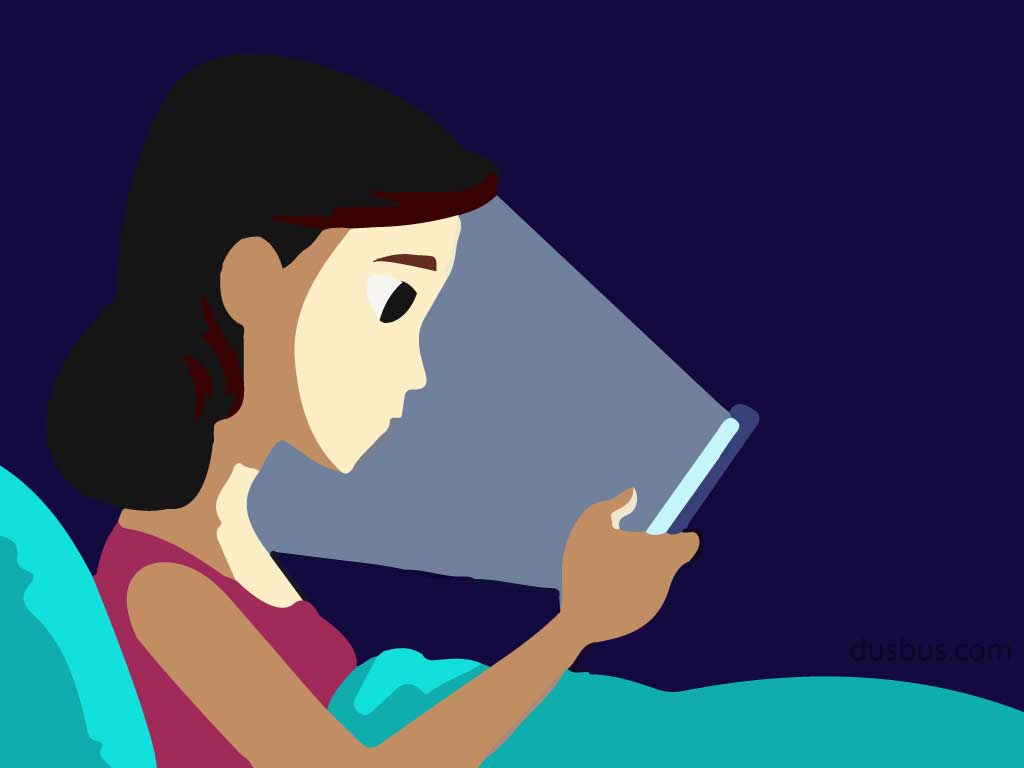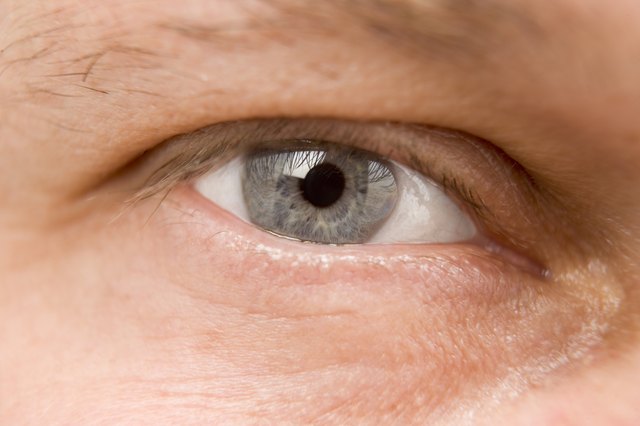Occasional Eye Twitch
While most people think of Botox as an injection used for cosmetic purposes, ophthalmologists are interested in the injection’s use as a treatment for eyelid twitching. While most of us experience the annoying sensation caused when our eyelids twitch.
Common causes of an eyelid twitch include: Staring at a computer screen for long periods Tiredness Caffeine, smoking or alcohol Stress Minor irritation of the eye Medications. Eye twitching comes in many shapes and forms, but most commonly, people will have an occasional twitch, especially when they are tired. According to Cedars Sinai, it can affect anyone, but it tends to be more common in middle-aged and elderly women. Eyelid twitching will often resolve on its own with a little TLC. If you experience occasional eyelid twitching that happens on and off or that lasts for a day or two, there is a good chance that you are not getting enough sleep and/or that you are under stress. Before scheduling an eye appointment, try the following: Get extra sleep. Eye Twitching How Stress Affects You No one knows what causes this, which your doctor might call blepharospasm. When it happens, your eyelid, usually the upper one, blinks and you can’t make it.
The majority of the time, this twitching is caused by a lack of sleep and/or stress, and it is only temporary. For some, however, eyelid twitching becomes a chronic situation. This type of eyelid spasming is called blepharospasm.
Figuring Out If Botox Injections Are Right For You
Eyelid twitching will often resolve on its own with a little TLC. If you experience occasional eyelid twitching that happens on and off or that lasts for a day or two, there is a good chance that you are not getting enough sleep and/or that you are under stress.
Before scheduling an eye appointment, try the following:
- Get extra sleep.Are you getting enough sleep? Are you sleeping well once you fall asleep? Visit sleepfoundation.org’s post, How to Sleep Better, and work towards getting the sleep you need to be well-rested.
- Practice stress management. Are you under stress? As we go to press, we are still in the midst of the COVID-19 pandemic, and families are struggling with all of the ramifications of that, including distance learning and unemployment. There’s never been a better time to take stock and cultivate the steps necessary to manage your stress. Click Here to read stress management tips from positivepsychology.com.
- Minimize or eliminate caffeine.If your spasms are related to a stress response, caffeinated beverages can trigger or exacerbate them. Try to minimize or eliminate caffeine to see if that helps.
- Apply a moist, warm compress.If you have the time and space, apply a warm, moist compress (a clean washcloth, folded into fours, and soaked in warm water is perfect) and hold it gently on your eye(s) for five to ten minutes. Repeat as necessary. You can even work this step into your stress management program!
- Use artificial tears to keep dry eye at bay.There is a correlation between dry eye and eyelid twitching. Using artificial tears a few times a day can help. If you experience continued episodes of dry eye, it is worth a trip to the eye doctor to evaluate the underlying cause.
If your eyelids continue to twitch for a week or more, contact your eye doctor – especially if you have any of the following symptoms:
- Inflamed eyelid(s)
- Pink eye (conjunctivitis)
- Light sensitivity
- Drooping eyelids
Other nerve/brain-related issues (Bell’s palsy, MS, Parkinson’s, various dystonias, Tourette syndrome) can also cause blepharospasm, and these should always be ruled out before proceeding with a course of Botox injections.
There are a few different treatments available to treat chronic eyelid twitching, but Botox injections are the most successful option for patients 12 years old and older.
Is It Necessary To Treat Eyelid Spasms?
Some patients find eyelid twitching intolerable, while others find it to be a minor irritation and ask whether they have to treat their spasms at all. We always recommend treating eyelid spasms because chronic spasming can lead to other complications.
Patients who do not treat long term eyelid twitching risk:
- Involuntary eye closure
- Light sensitivity
- Blurred vision
- Uncontrolled winking and blinking
Patients always have the right to refuse treatment, but we hope that you will schedule an eye appointment and discuss the options at length with your eye care provider before opting to avoid treatment.
Botox Injections Treat Blepharospasm
Botox (botulinum toxin) has been an FDA approved as a prescription medicine since 2002 but has been approved for use to treat uncontrolled muscle spasms since 1989. This means patients can feel confident in the 30+ years of safety that backs this treatment option.
When injected into specific muscles, Botox stops them from contracting – like a relax/cease action solution. In the case of your eyelid(s), we use a very thin needle. This generates a relaxing of the contracted eyelid muscles, and also blocks some of the nerve signaling responsible for the twitching, providing relief from the continuous eyelid muscle spasms. In most cases, patients’ eyelids slow and cease their spasms within a day to a week or so after their injection appointment.
The appointments only take about 10 minutes per eye or less, and they are almost always covered by your health insurance. Once the Botox takes effect, patients typically benefit from three months of spasm-free vision, at which point they are scheduled for another round of injections.
If Botox injections are not sufficient enough to relieve the spams, your ophthalmologist will discuss alternative treatment options with you. These may include prescription medication such as clonazepam, trihexyphenidyl, lorazepam, baclofen, and tetrabenazine. However, these medications can have less desirable to downright serious side effects, which is why Botox injections are always our first choice treatment for blepharospasm.
If neither Botox nor medication is successful, we’ll discuss surgical options which can eliminate the facial muscles or portions of the nerve(s) causing the spasm.
Risks And Complications Of Botox Injections
As with any treatment, there are risks and complications associated with using Botox injections. This is one of the reasons you should be very careful when selecting your ophthalmologist. You should work with someone who knows exactly what s/he’s doing, taking the time to review your symptoms, potential causes, and your medical history to ensure this is the right first-step for you.

Some of the risks and complications associated with Botox injections include:
- Problems swallowing, breathing or speaking. This is incredibly rare, and has typically affected those who have had issues with swallowing, breathing, or speaking in the past. This rare side effect occurs when botox affects muscles besides those in the eyelids.
- Spread of toxin effects. Again, there is a risk with Botox that the botulism toxin that works on the affected eyelids can potentially migrate or spread to other muscles and nerves, creating a “spread-of-toxin” effect.
To date, NONE OF THE ABOVE SIDE EFFECTS have ever been associated with patients using botox to treat eyelid twitching. They have only been reported in patients using Botox for cosmetic purposes.
The ophthalmologists and optometrists here at the Atlantic Eye Institute perform a thorough screening and medical health evaluation, which includes a review of the ingredients found in Botox to avoid an allergic reaction.
What is Functional Myoclonus?
Functional myoclonus refers to sudden jerky or shock like movements that occur as part of a functional movement disorder.
What Causes Occasional Eye Twitching
Myoclonus is a symptom found in a wide range of neurological diseases as well as some normal states.
Most people have had the experience of jumping or jerking as they are dropping off to sleep. These movements are called 'hypnic jerks'.
Most people are also familiar with the random body 'shudder' that some people get. This is sometimes described as 'walking on someones grave' because of the way it moves quickly through the body.
The occasional hypnic jerk or a body shudder are normal. But in functional myoclonus the jerks become a frequent and disabling problem.
There may be jerks of the arms or legs, or quite commonly there is jerking in the body.The movements cannot be controlled (ie they are involuntary)
How does it begin?
Functional myoclonus often begins quite suddenly (in around two thirds of cases) but may be gradual. It affects patients somewhat later than some of other symptoms described on this website. For example in one series of 35 patients the average age it started was 45. It may follow on from one of the following situations
1. A physical injury. Functional myoclonus may occur as part of complex regional pain syndrome. Jerks in the trunk commonly accompany back pain.
2. After experiencing myoclonus from a medical problem such as
a. a side effect of a medication
b. a faint with some jerky movements

:max_bytes(150000):strip_icc()/why-does-my-eye-twitch-3422029_final-1234a1e1ac524c7aa4e158d4161d2944.png)
c. an infection
d. a period of hospitalisation in intensive care
3. After having a 'fright' or a panic attack
4. With a symptom called 'dissociation' (spaced out or 'zoned out') which can happen without any feelings of fear.
What Would Make Your Eye Twitch
5. An underlying mild additional cause of myoclonus which has become 'amplified' because of functional myoclonus.
How is the diagnosis made?
The diagnosis of functional myoclonus is usually made by a neurologist. It can be difficult diagnosis to make because it requires expert knowledge of the full range of jumps and jerks due to neurological disease, many of which are unusual .
The following are some examples of things a neurologist would look for to diagnose functional myoclonus
1. Jerks of the trunk (i.e.body) rather than the legs
2. Sudden onset of the condition 'out of the blue' with no other obvious disease cause
3. Involvement of the face and/or voice in a patient who otherwise has bodily jerks
4. Flexion jerks of the trunk when walking
5. Jerks which can be suppressed or delayed by the patient using distraction techniques
6. In some research settings the patient can have an investigation called 'EEG jerk-locked back averaging'. This is to look for changes in the brain wave (EEG) that typically precede the jerk in patients with functional myoclonus. This change is called a Bereitschaftspotential (BP). You can only see this if you record lots of jerks in one individual. This is a difficult investigation to carry out and is more of a research tool than a routine test. The picture below shows a BP in a patient with functional myoclonus
Over half of patients with functional myoclonus describe warning symptoms before some of their jerks. These may last just seconds or sometimes minutes. Some patients describe a rising sense of tension which somehow the jerk gets rid of temporarily. So they dont want to have the jerk but it is doing something useful, some of the time. Understanding this can be useful in treatment
If you don't get any warning then don't be put off by the paragraph above. It doesn't apply to everyone with functional myoclonus.
What is the treatment?
Have a look through the pages on treatment but here are some specific points
Do you have confidence in the diagnosis?
It is essential that you feel that you have the correct diagnosis. If you don't it will be hard to put into practice the rehabilitation techniques suggested here.
If you don't feel that you have functional myoclonus you need to look at what basis the diagnosis has been made. You should have some of the clinical features described above. If you do, why don't you have confidence in the diagnosis you have been given?
You do not need to be stressed to have functional myoclonus. In fact functional myoclonus is often most noticeable when people are relaxed or not thinking about anything in particular. Perhaps you rejected the diagnosis because the doctor suggested it was 'stress related'? - there may have been a misunderstanding if that was the case.
We know that many patients with functional myoclonus do have stress as a cause of their symptoms, but many don't. So whether you have been stressed or not is not relevant to the diagnosis.
Specific techniques
The treatment of functional myoclonus is quite challenging. Usually the problem has been going on for some time and has become a 'habit' that the brain has got in to. The following may be worth considering
1. If you do get even the slightest warning phase then try to use distraction techniques to see if you can avert a jerk. You can use the same techniques that are described for dissociative attacks. Some patients report that when they do this they can be successful but then have a jerk or series of jerks that are even worse immediately afterwards. But keep trying - you may find its one way to 'break the habit'.
2. Are you expecting to have jerks at a certain time - for example when you lie down at night to sleep or are in a public place. The way the brain works means that sometimes if you really expect something to happen, it will, even though you dont want it to. This is called a 'conditioned response' and is something that is well understood by psychologists when they think about habits in the brain. If you try to challenge those thoughts then perhaps it can alter your jerks

3. Medication -is often disappointing in functional myoclonus. Most patients have tried medicines like clonazepam without success
4. Hypnosis - Sometimes under hypnosis, jumps and jerks may improve and you may be able to learn self hypnosis to practice at home
Unfortunately many patients with functional myoclonus find that it is a problem which persists. But its certainly worth trying to improve it. Even knowing what it is can give people valuable peace of mind.
A note on Benign Muscle twitches – these are sometimes called ‘benign fasciculations’.
Benign fasciculations are not usually considered a functional disorder, but they are benign, cause concern and may coexist with some of the other symptoms on this website which is why I mention them
Most people have small twitches from time to time, especially around the eye and in the fingers. Such twitching is so common that to experience it occasionally is normal.
Occasional Eye Twitch
However, some people find that they experience more and more of this muscle twitching until it is present in multiple areas of their body, for most of the time. This can lead to understandable anxiety about what is causing the symptoms, which in turn makes the twitching even worse.
Generalised benign twitching like this is known to occur more frequently in medical students and doctors who, on developing these symptoms, worry that they might have motor neurone disease (known in the USA as ALS).
In fact the twitching seen in this condition, which affects the whole muscle fibre, is different to the smaller wriggling movements, called fasciculations, seen in motor neurone disease. The condition is therefore somewhat misnamed as benign fasciculation. There are other causes of generalised muscle twitching but benign fasciculation remains the most common clinically.
As with functional symptoms, knowing what the problem is can help it to settle spontaneously.
Occasional Eye Twitching
This is an article written by a doctor who experienced benign fasciculations and health anxiety which subsequently resolved with treatment.